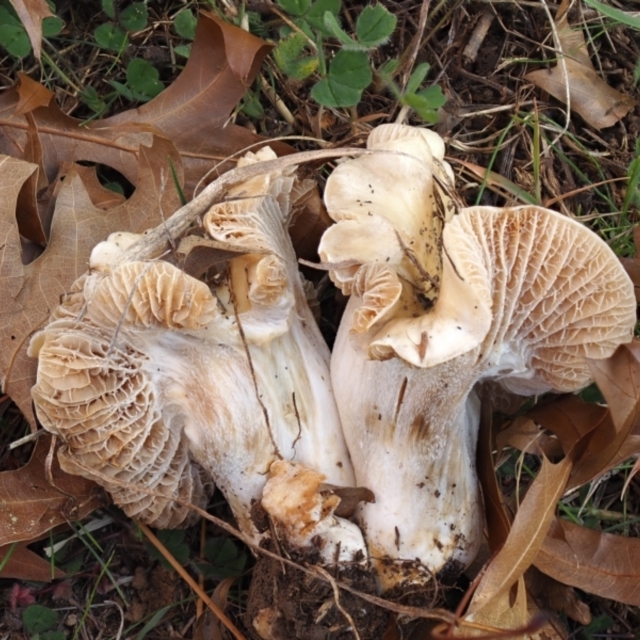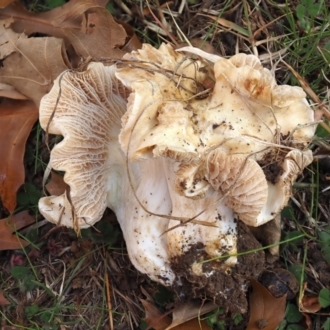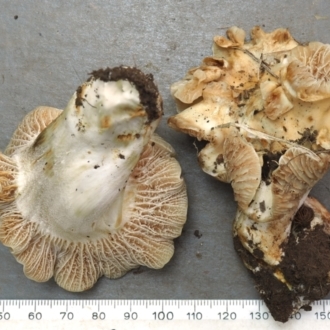Hebeloma sp.
The frutibody is a mushroom with a cap atop a central stem. The cap ranges from a centimetre to over 10 centimetres in diameter. The caps are smooth, white or some shade of brown and commonly are greasy to slimy. Gills are white(ish) to greyish-brown. The stems are dry, at least a little roughened or fibrillose and typically white(ish), perhaps with brownish shades.
The authors of the website listed below state: "A visible veil is an important taxonomic character. It appears that all Hebeloma start out with a cobweb-like to woolly or membranous universal veil, usually only seen in primordia. But it can leave traces on the cap and the lower part of the stipe".
Notice the word ‘can’. If you look at photographs of mature Hebelomas you will see many with no obvious traces of a veil and it is clear that while the primordial stage may have a veil, much it may have disappeared by the time the mushroom has matured.
Spore print: dingy brown or occasionally pinkish-brown.
The fungi are mycorrhizal and in Australia we have both endemic and introduced species, but the endemic species are still largely unstudied.
Look-alikes
Macroscopically, the species of Hebeloma are somewhat nondescript, with little in the way of features that immediately say “Hey, I’m a Hebeloma” to the uninitiated. However, with some experience it is possible to pick up a mushroom and after a bit of study be reasonably sure of having picked up a Hebeloma.
Further information
A website devoted to Hebeloma: https://hebeloma.org/.
If you go the ‘where’ page (https://hebeloma.org/where) you can find out which species the website authors have recorded from a particular country or region.
Hebeloma sp. is listed in the following regions:
Species information
- Hebeloma sp. Scientific name
- Common name
- Not Sensitive
- Unknown
- Unknown
- Machine learning
Follow Hebeloma sp.
Receive alerts of new sightings
Subscribe










